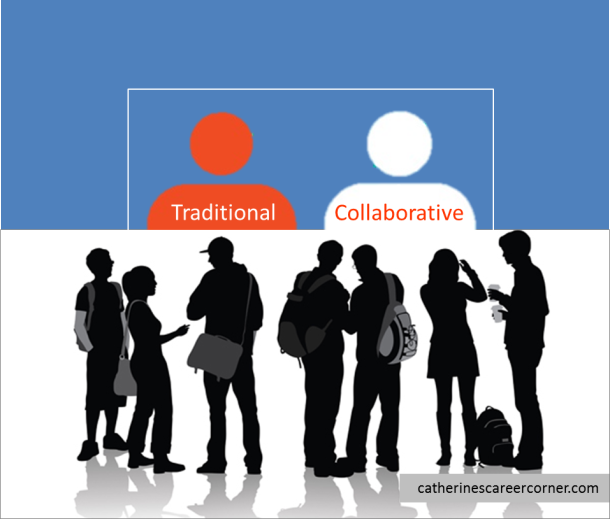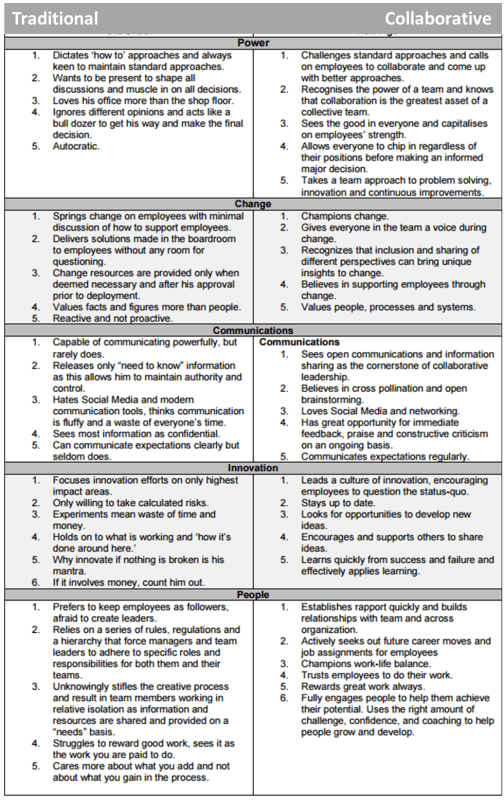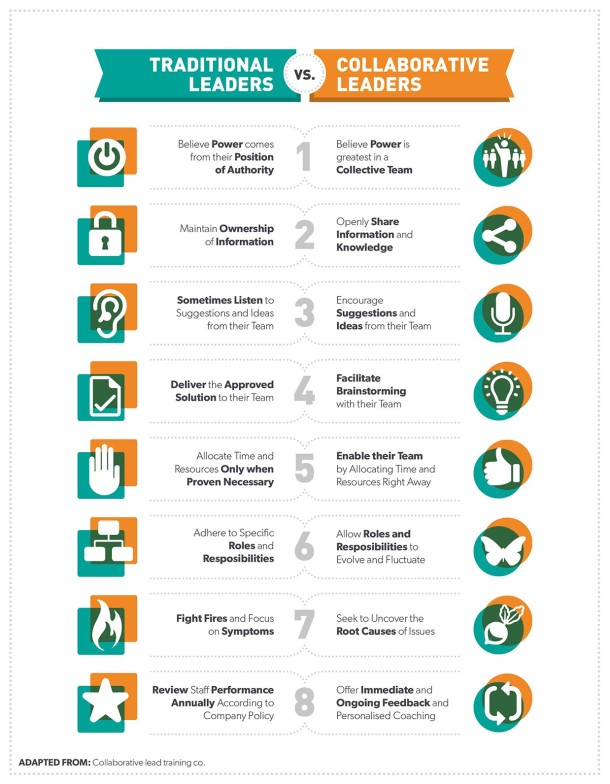Few months ago, I went through the 2015 list of the 100 Best Companies to Work For, once again, Google topped the list for 2015. This marks Google’s sixth time of topping the list. Apparently, Google topped the list not just because of their great benefits and perks, but because they know that majority of employees love to work for great and collaborative bosses.
Armed with the technological supremacy of their analytics team, Google builds each employee the boss of their dreams. They researched the qualities that make managers great leaders from the people that report to them. They see these leaders as the kinds of leaders that everyone wants to work for. Then, these leaders’ skills and qualities are enhanced further through various training programs.
As an employee, do you rave about your manager’s qualities? What sort of leadership style does your manager demonstrate?
Employees now reject the command and control management approach
Gone are the days when managers control and have the last word on everything. Increasingly, as most organizations seek innovative solutions to challenging economic environments; they try different approaches to improve open innovation, engage employees, encourage growth, increase productivity and grow profits. Gradually, employees are rejecting the command and control management approach. Instead, they are gravitating toward a collaborative style that inspires them and others to be their best self in a positive work environment. For this reason, the traditional management style of top-down management by managers is slowly decreasing. Consequently, it is evolving into a collaborative style of management, one that empowers employees and clearly blurs the lines between managers and employees. This has allowed for purposeful team building and power-sharing which are vastly replacing the traditional managerial organizational hierarchy.
Managers in today’s business world have to follow the new paths to corporate growth and in the process, help themselves and their teams to create a new business model that gives both of them more ownership of their work than ever before. Sadly, the traditional manager’s approach still suits some leaders best because they struggle to share what they see as their well-earned managerial power. Due to this reason, not all managers are actively allowing their employees to grow in collaborative environments.
“The first responsibility of a leader is to define reality. The last is to say thank you. In between, the leader is a servant”. —Max DePree
Collaboration is important to your learning, engagement and career growth
Most jobs nowadays involve a great deal of collaboration; more people collaborate across functions and reporting lines. A lot more do their jobs remotely and work in self-managing teams. All of these employees are expected to come up with their own ideas and take responsibility for getting the job done. But how can distributed teams function well unless their managers give them the flexibility that will make them feel empowered, knowledgeable, motivated and involved particularly with little or no supervision? For individuals to bring their own motivation, do their best work and share that passion with their peers in a company, a certain type of leadership is required.
Do you have a traditional or collaborative manager? Find out!
When it comes to the traditional or collaborative type of manager, some characteristics overlap; some may also be used together and others may be used less frequently, while some are polar opposites.
Now, find out if you have a traditional or collaborative manager. Below is a description of some of the characteristics of both a traditional and collaborative manager. Find out through this personal litmus test statements if you have a traditional or collaborative manager by mentally adding YES or NO truthfully in front of each of these 20 major comparative statements for your own manager. The characteristics are placed under 5 major leadership areas of the differences indicating traditional and collaborative styles of leadership approaches:
Your answers to these statements provide solid clues to whether or not you have a traditional or collaborative manager.
Were most of your responses “YES” under the ‘Traditional’ section? Well, remember that ‘Traditional’ style of leadership served corporate culture well since the beginning of the industrial revolution especially in manufacturing organizations. Why? It allowed executives to understand the market they serve and make decisions based on experience and information that are not necessarily important to employees at the bottom of the hierarchy who have specific functions to perform within the organization. However, you may need to adjust how you work with your traditional manager to learn, grow and strengthen your skills in today’s fiercely competitive business environment.
Has your manager seamlessly transitioned his or her leadership style to the ‘Collaborative’ style of leading? If so, as a collaborative manager who relishes in collaborations and power-sharing, he or she is ahead of the curve.
If your manager hasn’t transitioned his or her leadership style from the traditional way of leading yet, he or she may be one of the traditional managers struggling to give up their dominance of power to facilitate collaborations without borders. However, it’s worth considering the fact that the style may suit your current organization, but may also affect your organization’s competitive edge, your career growth and skills. The Infographic below further elucidates whether you have a traditional or collaborative manager:
Infographic: Traditional Leaders vs. Collaborative Leaders
Now that you know if you have a traditional or collaborative manager, you can decide on the best way to work with your manager or make a decision to work for an organization where collaboration is valued.
Feel free to share this article and also share your thoughts in the comments section below because I learn just as much from you as you do from my articles.







